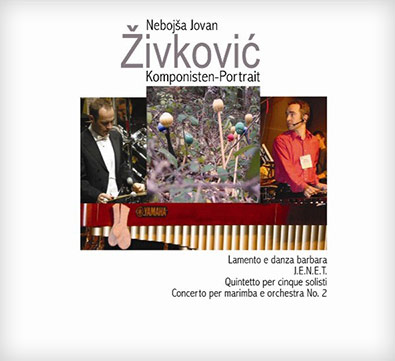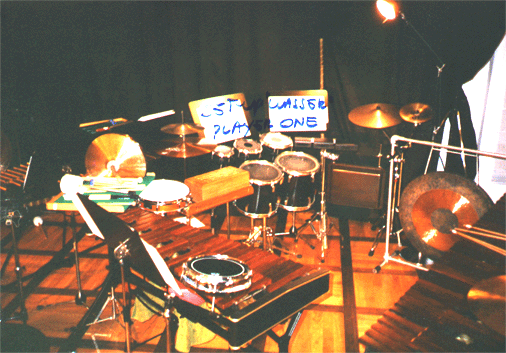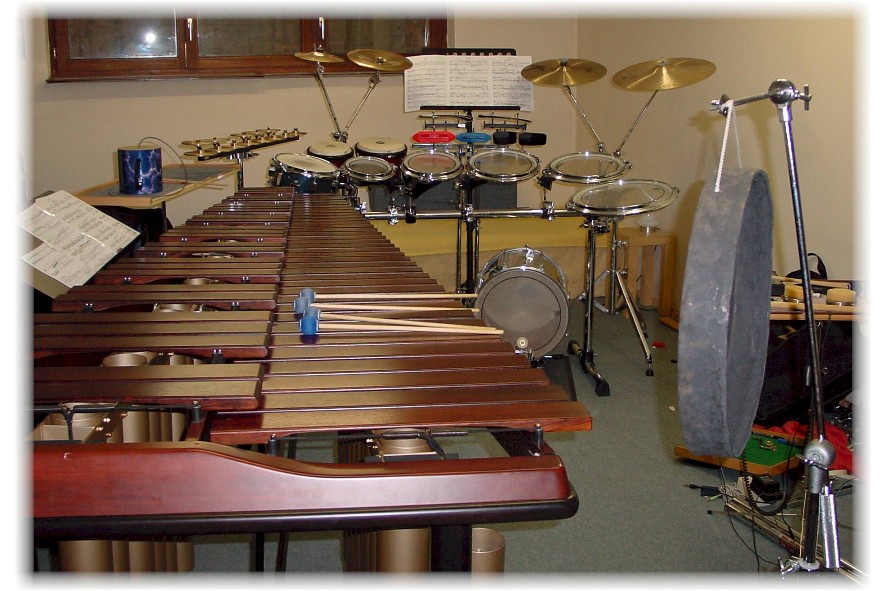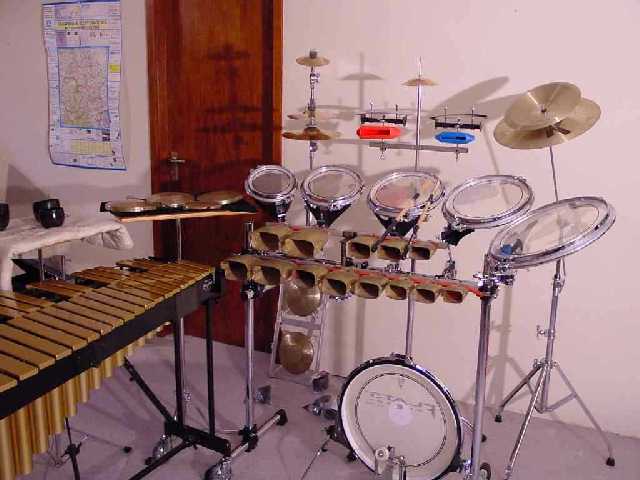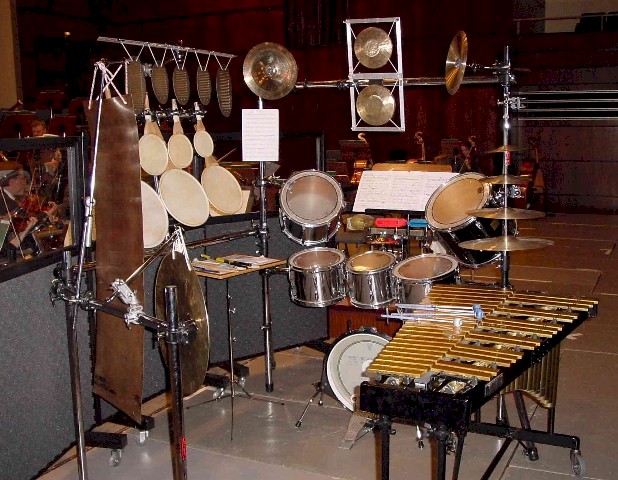Including new percussion pieces by Zivkovic:
ULTIMATUM II for two Marimbas * TRIO PER UNO for Percussion Trio
The Castle Of The Mad King for the pictured Set-Up * Suomineito for Vibraphone
and marimba pieces:
Ilijas, Northwind, Ein Liebeslied, Il canto dei gondolieri, Bayerischer Ländler, Der kleine Paganini
Almost 70 minutes of PERCUSSIVE MUSIC!
Critics:
…the range and combinations of sounds he creates are startling, and all is delivered in hugely virtuosic performances which can’t help but impress the listener…
…It’s often hard to identify the instruments being played, and even harder to believe that there’s just one person playing…
David Kettle , BBC-MUSIC MAGAZINE, Nov. 2000
CD’s available from your local dealer or order at the address below:
CD’s erhältlich in gutem Musikalienhandel, oder direkt zu bestellen bei:





